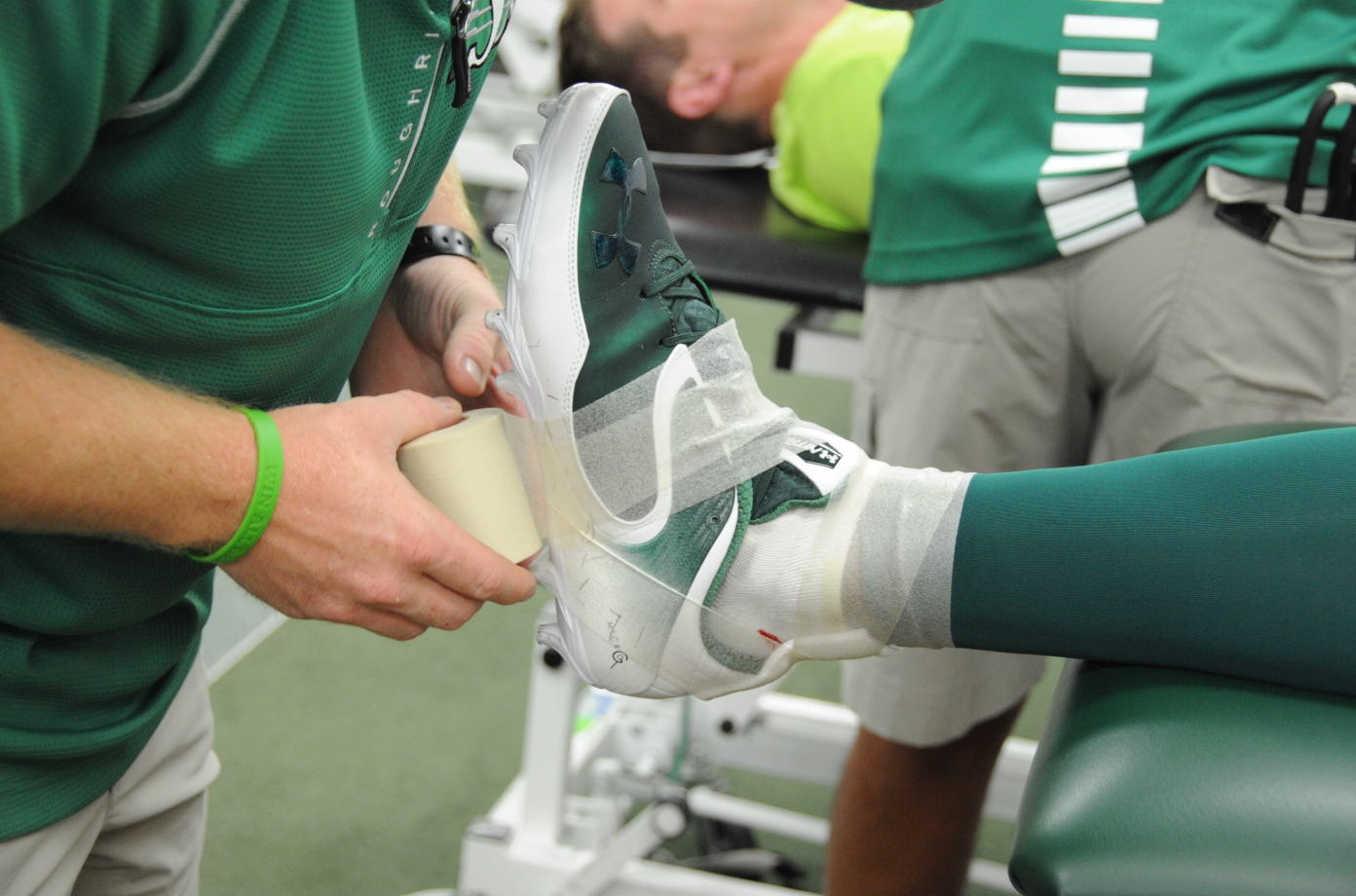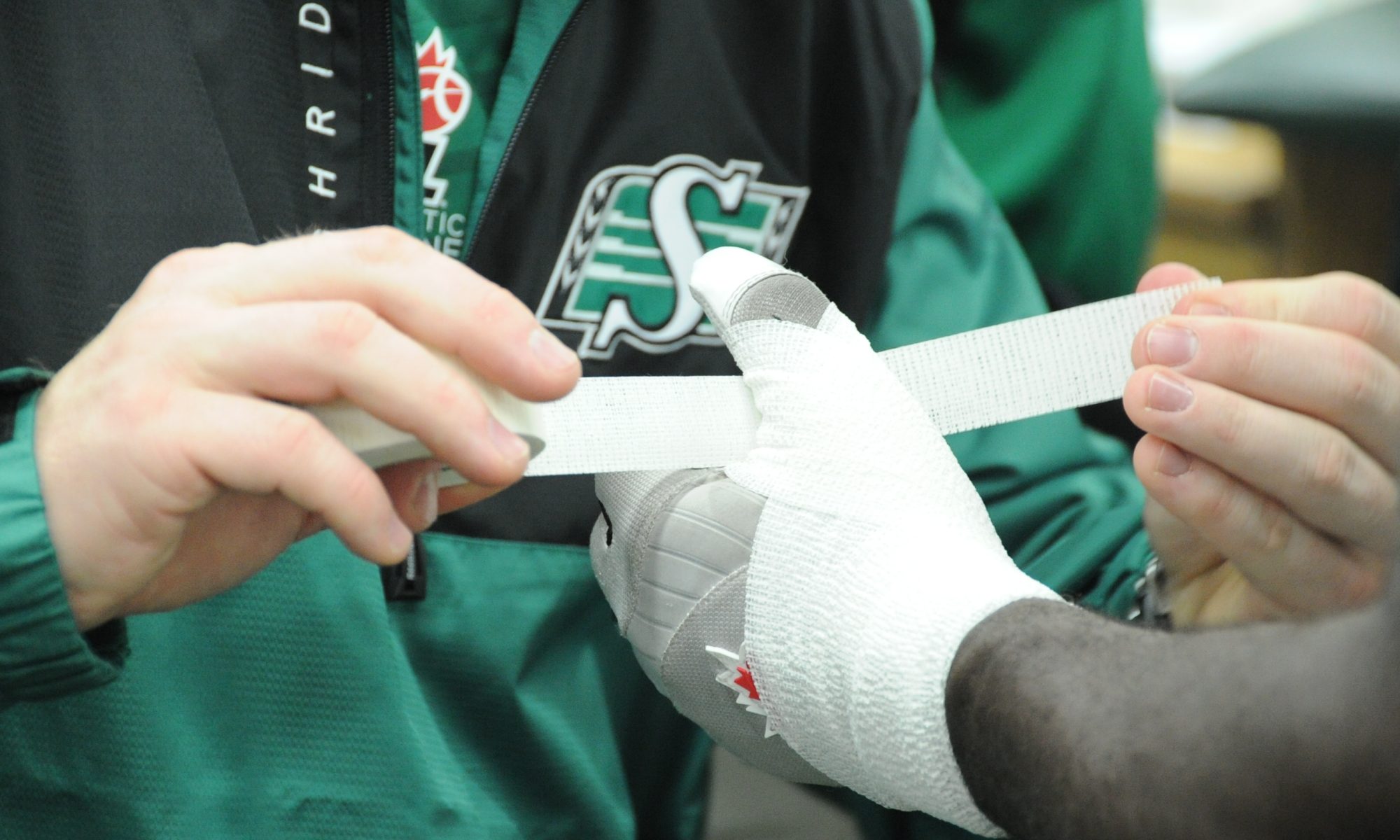The Canadian Athletic Therapists Association (CATA) is an organization devoted to the health care of Canadians. Certified Athletic Therapists, CAT(C)s, in cooperation with performance enhancement personnel and members of the health care delivery team, is an integral part of a total service to maximize the performance and welfare of all Canadians. Concomitant with the execution of this role, the Athletic Therapist nurtures an attitude of positive health.
The scope of practice of a Certified Athletic Therapist starts with the in-depth knowledge, education and training in the areas of the human musculoskeletal system, exercise physiology, biomechanics, and basic emergency care. Within this, the scope of practice is divided into five practice domains representing the core areas of competency that the CATA accredited institutions follow in educating Certification Candidates to become entry level, practicing Certified Athletic Therapists.
The five practice domains are as follows:
- Prevention
- Assessment
- Intervention
- Practice Management
- Professional Responsibility
There are numerous physical and cognitive skills to be obtained within the scope of a Certified Athletic Therapist and include, but are not limited to, the following (listed in no particular order):
Prevention
- Instruction to individuals on the use and application of commercially made or custom made protective equipment to minimize the risk of injury, illness or health related conditions
- Provide custom-made devices or properly apply commercially made products in order to provide prophylactic/protective measures to minimize the risk of injury, illness or health related conditions
- Patient education on risks and corrective actions associated with participation in fitness and sport programs, workplace ergonomics and musculoskeletal injury prevention in both the active lifestyle and workplace settings
- Facilitate physical conditioning by designing and implementing programs to reduce the risk of injury, illness or health-related conditions
Assessment
- Formulate an Athletic Therapy diagnosis by interpreting the mechanism of injury; determining signs, symptoms and predisposing factors of an injury, illness or health related condition; performing specific physical, orthopedic or fitness testing in accordance with accepted procedures to assess an injury, illness and/or health related condition
- Assess for/recognize the potential of a sport related traumatic brain injury/concussion
- Assess the biomechanical impact of injury, illness or health-related condition to promote ergonomically correct function
- Reassess the status of injuries, illnesses and/or health-related conditions using standard techniques and documentation to determine appropriate treatment, rehabilitation and/or fitness and reconditioning plans
Intervention
- Employ life-saving techniques through the use of standard emergency procedures to reduce the incidence of morbidity and mortality
- Prevent exacerbation of non-life threatening conditions through the use of standard procedures to reduce morbidity
- Engage in rehabilitative therapy (including electrical, thermal and mechanical modalities) using standard techniques and procedures to facilitate recovery, function and/or performance
- Administer therapeutic and conditioning exercise(s) using both standard and advanced techniques and procedures to facilitate recovery, function and/or performance either pre- or post-injury or surgical intervention, as well as for general illnesses or conditions related to the musculoskeletal system
- Educate and provide guidance and/or counseling to patients and individuals in the treatment, rehabilitation and reconditioning of injuries, illnesses and/or health-related conditions to facilitate recovery, function and/or performance
- Educate, provide guidance and/or counseling for, and administer appropriate return protocols for patients returning from sport related traumatic brain injuries
Practice Management
- Use an information management system to maintain appropriate medical records/documentation to comply with accepted best practice guidelines
Professional Responsibility
- Adhere to policies and procedures for the delivery of healthcare services following accepted guidelines to promote safe participation, timely care and legal compliance
- Maintain records using a system to document professional services rendered to provide quality healthcare services
- Adhere to statutory and regulatory provisions for the practice of Athletic Therapy by maintaining an understanding of these provisions and responsibilities to contribute to the safety and welfare of the public
The above list, although not exhaustive, provides the basis of the knowledge and skills required to attempt and pass the National Certification Exam (NCE). Certified Athletic Therapists must also adhere to all provincial legislation and documents governing the use of any adjunct training outside of the entry-level scope for a Certified Athletic Therapist.

